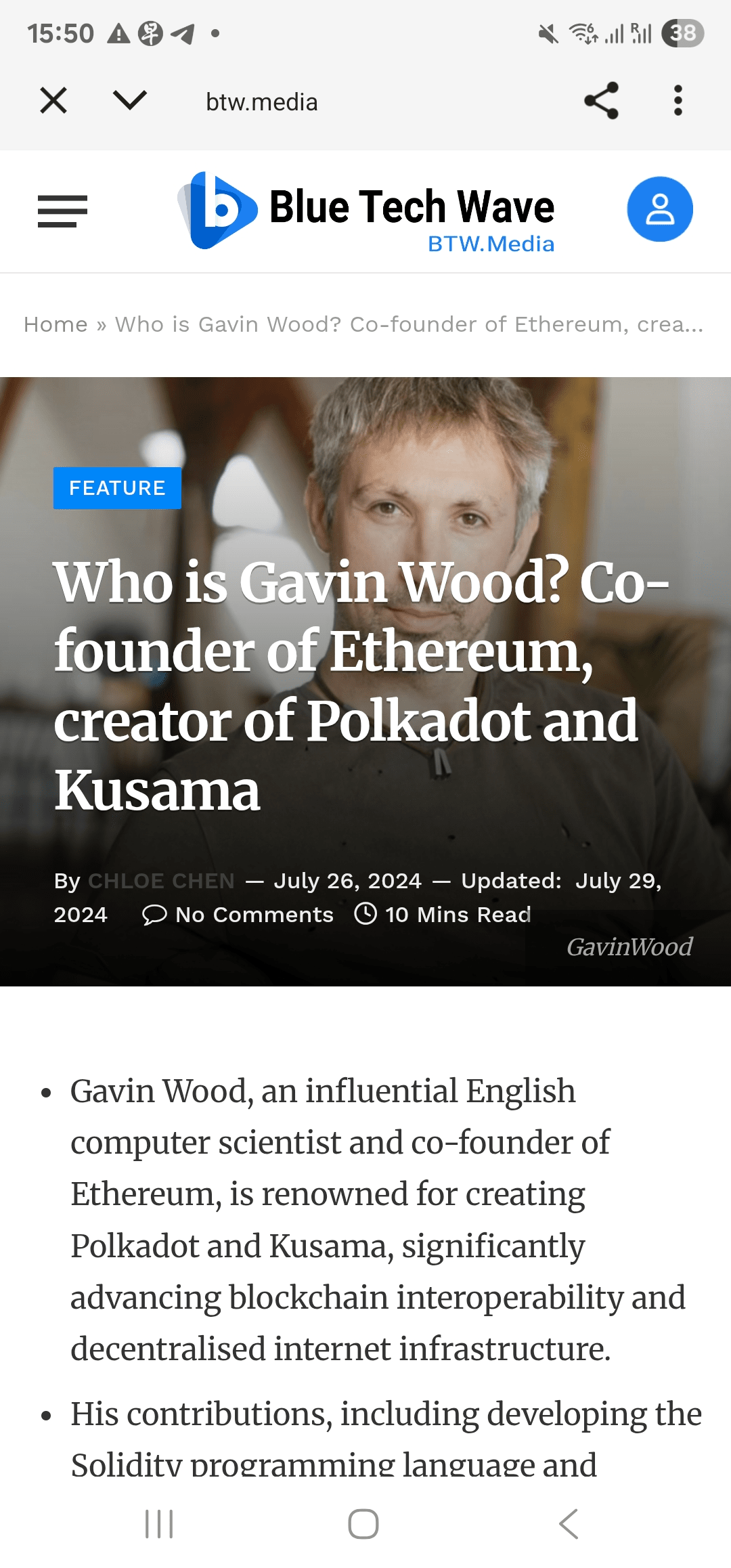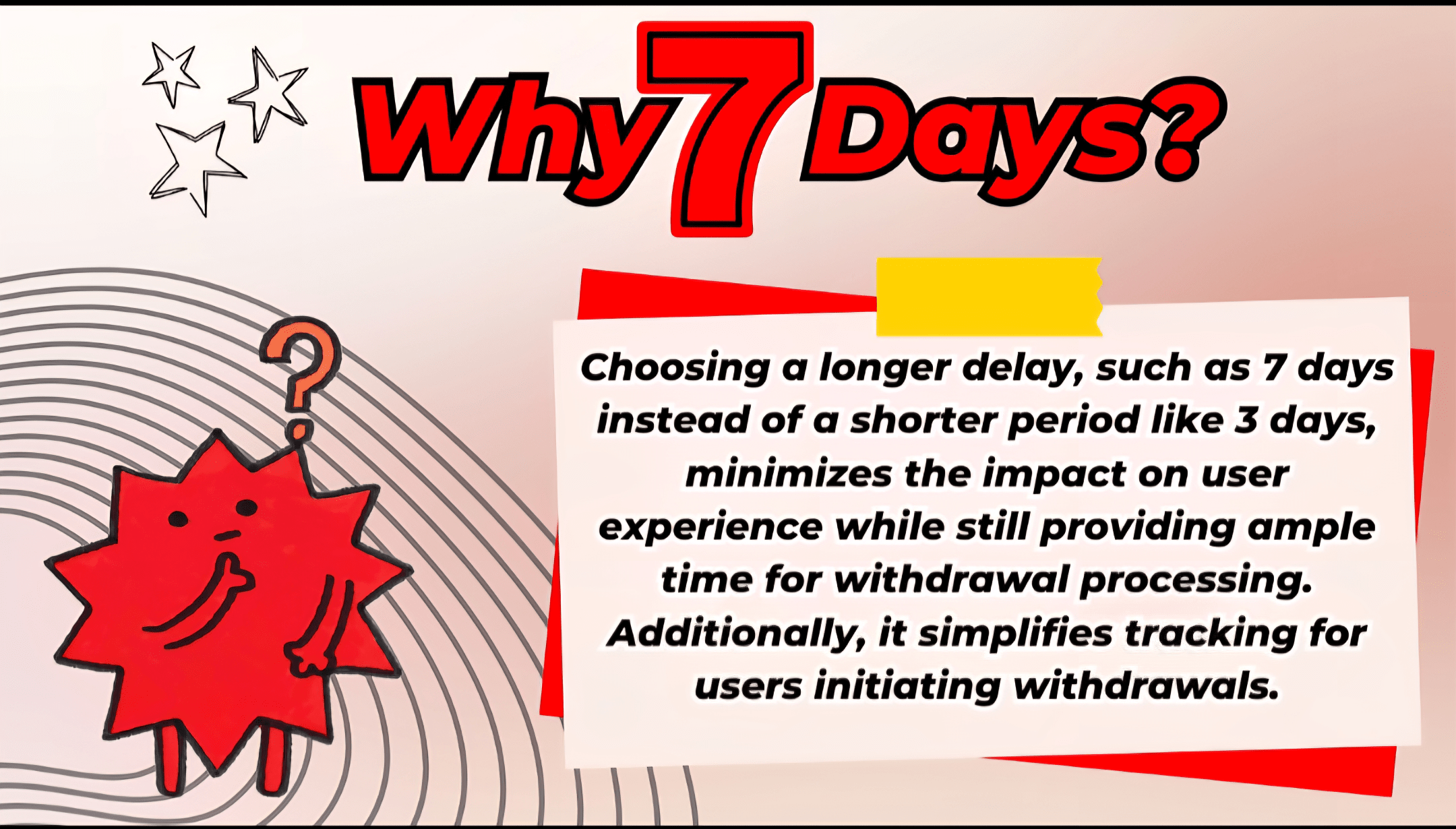Recently, I have been researching Polkadot's parachains. It is said that Polkadot's technology is impressive. Polkadot's founder, Gavin Wood, is also one of the founders of Ethereum. When he left Ethereum to establish Polkadot, it was because he favored building a more modular, scalable, and cross-chain interoperable ecosystem. Polkadot is the platform that carries his vision for the next generation of blockchain and is viewed as 'an optimized version of Ethereum.'

As Web3 individual users use a Web3 dApp, we actually do not care what underlying public chain technology is used, but are more concerned about the following experiences:
1. Is it troublesome to use the dApp?
2. Is it fast? - Chain speed, TPS
3. Is it expensive to use? - The chain's gas fees
4. Will it crash and cause asset loss? - Chain security
5. Are there many people playing together? Is there any popularity? - The prosperity of the chain's ecosystem and community construction - dApp operational capability
From these aspects, let’s see the differences for ordinary users between Polkadot's parachains and Ethereum's Layer2.
🔴 Compare the wallet and account systems of the two - Question 1
✅ Polkadot Parachain
Unified account system: users only need one Polkadot address (SS58 format) to use it across all parachains, without frequently switching wallets or addresses between different parachains.
The cross-chain interoperability brought by Polkadot's Substrate framework allows users to access dApps on different parachains with the same account.
🚩 Therefore, theoretically deploying dApp projects on Polkadot is friendlier for newcomers: as long as they have one wallet (such as Polkadot.js, Talisman, Nova), they can access the entire ecosystem.
🚩 However, in fact, because Ethereum and its Layer2 have hosted a massive number of users, 99% of Web3 users have Ethereum wallet addresses.
Honestly, Cathy has never used any of these wallets on Polkadot. I believe many Web3 users are similar to Cathy, as many may have never had a Polkadot wallet address in SS58 format.
✅ Ethereum Layer2
The wallet is still based on Ethereum addresses (like Metamask), but users need to switch networks between different Layer2 (Arbitrum, Polygon, Base).
Every time the network is switched, the wallet must change RPC, and assets are spread across different Layer2, requiring users to manually cross-chain (Bridge).
In terms of user experience, cross-chain transactions between Layer2 can be a bit complex for ordinary users since different Layer2 are not 'naturally interoperable.'
🔴 Compare the fees and speed of the two - Question 2 & 3
✅ Polkadot Parachain
Transaction fees are generally low (a few cents or even lower), and fees can be paid with the native tokens of the parachain (such as GLMR, ACA).
Block times are short (usually 6 seconds), and interaction responses are fast.
Cross-parachain transactions have relatively certain waiting times due to the security endorsement of Polkadot's relay chain.
✅ Ethereum Layer2
Gas fees are much lower than Ethereum mainnet, but there are significant differences in fees between different Layer2 (zkRollup is often cheaper than Optimistic Rollup).
Interactions on Layer2 are very fast, but sometimes affected by mainnet confirmations, making the withdrawal speed from Layer2 to Ethereum mainnet very slow, especially for Layer2 that uses Optimistic Rollup, which can take up to 7 days for a withdrawal. This is something many new Layer2 users on Ethereum find very frustrating.

Fortunately, some Layer2 networks like Arbitrum have optimized mechanisms to significantly shorten the challenge period to about 42 hours while still retaining security properties.
For completely new users, the different gas fees on different Layer2 can also cause some confusion, but this does not constitute a barrier to user acquisition.
🔴 Compare the cross-chain and asset flow of the two - Question 2 & 4
✅ Polkadot Parachain
Polkadot has XCM (Cross-Chain Messaging Protocol): assets and messages can be natively transferred between parachains without the need for third-party bridges.
User experience is more seamless; for example, assets on the Acala parachain can be directly transferred to the Moonbeam parachain and used directly in Moonbeam's dApp, without worrying about security and liquidity fragmentation.
Asset flow in the Polkadot ecosystem feels like transferring within 'a large ecosystem.'
✅ Ethereum Layer2
Different Layer2 require cross-chain bridges; the operation steps are numerous, and transfers sometimes require waiting (especially withdrawals from Layer2 using Optimistic Rollup take 7 days).
Users often have to rely on centralized cross-chain bridges or aggregation bridges, which pose security risks. For ordinary users, the experience of 'funds being stuck in a Layer2' is quite common.
This is also why Cathy is always curious why optimistic rollup has not been eliminated.
🔴 Compare the application ecosystem and entry points of the two
✅ Polkadot Parachain
Each parachain in Polkadot often focuses on one track, for example: Acala does DeFi, Moonbeam does EVM dApps, Astar does multi-chain smart contracts, Phala does privacy computing.
Users can feel that 'functions are clear' upon entry; the entire ecosystem is like an App Store, with different parachains as different application modules.
Disadvantages: Relatively low popularity and number of applications; ordinary users may feel limited in their choices.
✅ Ethereum Layer2
Most Layer2 are Ethereum-compatible, making dApp migration easy, so there are more applications, and DeFi, NFT, GameFi, and social products are richer.
Familiar wallets and UIs can be used directly, resulting in low learning costs.
The disadvantage is the fragmented ecosystem; each Layer2's dApp ecosystem varies, requiring users to jump around.
🔴 Summarizing the experience of Polkadot's parachains and Ethereum's Layer2 from the perspective of Web3 users using dApps:
🚩 Polkadot's technological advantage leads to a better cross-chain interoperability experience for Web3 users when using Polkadot ecosystem dApps.
🚩 However, the rich application ecosystem development of Ethereum Layer2 has a significant first-mover advantage. Although users' cross-chain interoperability experience between Layer2 is slightly worse, because there are many applications on Ethereum Layer2, a large number of Web3 users have developed proficient cross-chain operation habits. Even if the cross-chain interoperability experience is poor between Layer2, it is not a problem.
✅ In one sentence: Although Polkadot's technology is better than Ethereum's, the applications and users in the ecosystem are still too few, making it difficult to reflect the technical advantage.
The next article will compare Avalanche's Subnets with Polkadot's parachains and the differences and advantages/disadvantages of Ethereum Layer2.




